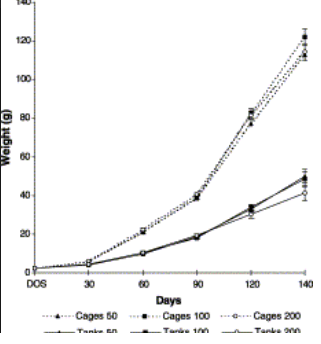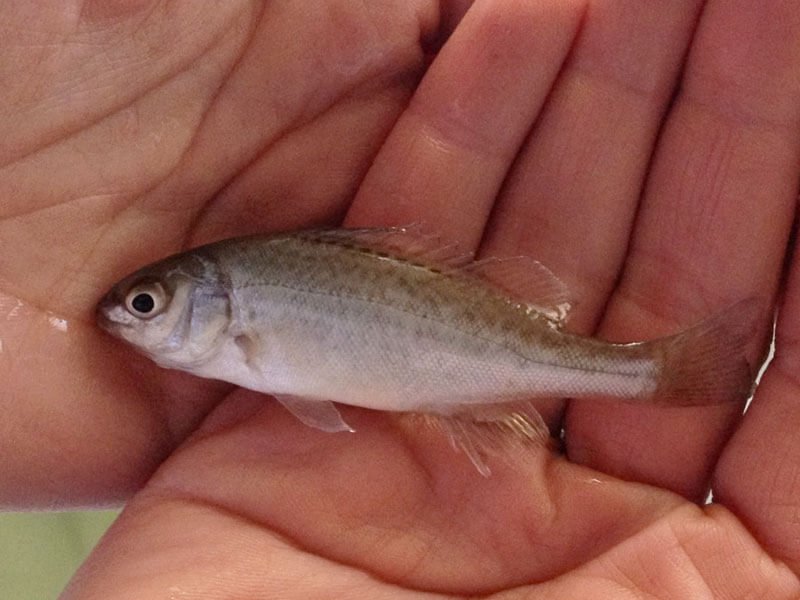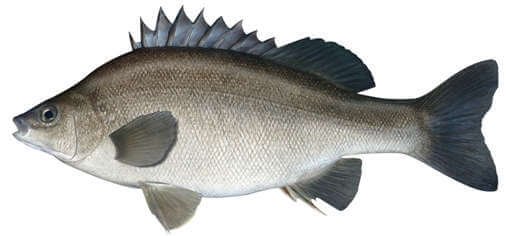 Choosing the right fish for your aquaponics system is about more than just picking the prettiest one or the one you like the sound of the most. You need to match the fish to the plants you are hoping to grow; both need to be happy in the same pH and temperature levels.
Choosing the right fish for your aquaponics system is about more than just picking the prettiest one or the one you like the sound of the most. You need to match the fish to the plants you are hoping to grow; both need to be happy in the same pH and temperature levels.
You may be surprised to learn that silver perch for aquaponics system is actually a really good option. It is compatible with a wide range of plants and is surprisingly accommodating to changes in the environment.
Here’s everything you need to know to start raising silver perch in aquaponics:
Silver perch temperature
Silver perch originate from Australia, they have a small head and a large body which gives them a distinctive patterned appearance. The silver/gray color of their body can change according to the water quality and other environmental factors.
You won’t be surprised to learn that these fish prefer warmer waters; after all, they are native to Australia. What may surprise you is that they can survive in water as low as 55°F, or as warm as 90°F. This makes them suitable for almost any aquaponics setup and plant growth.
Silver perch growth rate
A silver perch is considered to be market size when it gets to approximately 1 pound in size. A silver perch aquaponics system should make this possible within 12 months.
The best approach is to purchase fingerlings when they are approximately 3 inches long and already accustomed to eating pellet food. This will make it easier to look after.

It is also worth noting that silver perch can flourish when the pH is anywhere between 6 and 10, although they are not generally happy over 9.
You’ll need to keep the dissolved oxygen level over 4mg/l and the ammonia under 0.1mg/l.
In these conditions, you’ll see steady growth in your fingerlings from 3 inches to 12 inches, potentially in less than 12 months.

Silver perch vs yellow perch vs jade perch
Jade perch and silver perch are both native to Australia, while the yellow perch actually originates from North America.
While the yellow perch has its place in an aquaponics system, it is not as versatile as the silver perch, or the jade perch. Yellow perch can only tolerate a temperature range of 35°F to 65°F. It is possible for them to survive in warmer waters but they are more likely to be stressed.
The jade perch will die if temperatures drop below 55°F, making both it and the silver perch inferior to the yellow perch; if you need cool water for your aquaponics system.
This is perhaps the real difference between these fish; what plants you are hoping to grow. Anything that needs cooler weather will work best with the yellow perch. Warmer areas need silver perch or jade perch.

I have written a book that contains all the information you need to get started with aquaponics.
Don’t be the person that makes painful mistakes during your first aquaponics build!
It has 265 pages filled with information about aquaponics. It’s available in paperback or eBook format.
You can buy it here on Amazon.com
Can you combine silver perch with other fish?
The silver perch is generally a peaceful fish but there are times when they will quarrel with each other, potentially to set the pecking order. However, they will not generally attack other fish (if they are the same size) in the tank.
Breeding silver perch
Silver perch is similar to many other freshwater fish in Australia; they are used to surviving in the droughts with very little water. Once the inland streams start to fill again they will take the opportunity to breed.
However, this makes it very difficult to replicate this pattern when you’re trying to make them breed.
You will need to have the water temperature at a minimum of 75°F to get the breeding program started. This will encourage any fish capable of spawning to do so. You’ll need to keep the fertilized eggs in a quiet part of the tank and maintain the 75°F temperature for 36 hours.
The eggs should then hatch and will consume their yolk sac for the next 5 days. At this point the 5mm long larvae will feed on zooplankton; you’ll need to ensure there is plenty of this in your tank. Although the larvae should not be targeted by the larger fish, you may want to consider moving them to their own tank; it will be easier to monitor them and maintain the environment.
Within 4 weeks they should be 15mm long; at this stage, they will be fingerlings. You can generally expect 30% of the eggs to survive to this stage. By 7 weeks they will be approaching 30mm and you can start thinking about putting them back into your main tank.

FAQ for silver perch aquaponics
What do silver perch eat?
Silver perch are considered to eat smaller living fish as well as vegetation, they’ll eat almost anything green in the water. However, they are also very easy to train for pellet eating; making it much easier to look after them.
You can also give them treats, such as green lettuce leaves, or even duckweed.
How big do silver perch get?
At plate size, the silver perch will be approximately 12” long. However, if you keep them for longer in your tank they will grow to an average of 18 inches long and can weigh as much as 3 pounds.
The largest silver perch recorded in the wild was an impressive 16 pounds! But they are unlikely to have the space to grow that big in your tank.
How long does it take to reach market size? (500grams)
They should reach 1.1lbs (500g) within a year, it can sometimes be faster than this if the aquaponics system is set up just right.
Can you eat silver perch?
Yes, silver perch is actually delicious, the flesh is very white and mild although it can have a slightly muddy taste; if caught in the wild. Providing you’ve been looking after the water quality in your tank this shouldn’t be an issue. If you’re concerned then purge the fish in clean water for a week to maximize the flavor.
You can cook them virtually any way you like.
How does silver perch taste?
The taste is mild and fresh, you’ll find the meat is generally minimal compared to other fish f the same size, but it’s still a good meal and it flakes easily off the bone.
How long does silver perch live?
A silver perch may be plate size in just a year but, if you don’t want to eat it, the silver perch will continue to grow and can live for 10 years.
Where to buy silver perch fish?
Virtually any fish store should stock silver perch and you’ll be able to inspect the first. The alternative is to find a silver perch aquaponics specialist who will deliver. This can be difficult as they’ll be sending live fish, but it’s not impossible; just expensive.

I have written a book that contains all the information you need to get started with aquaponics.
Don’t be the person that makes painful mistakes during your first aquaponics build!
It has 265 pages filled with information about aquaponics. It’s available in paperback or eBook format.
You can buy it here on Amazon.com

Nick loves building, managing and giving others advice on aquaponics. He created this website to do just that. He is the author of Aquaponics for beginners. If you got a question contact him here or read more on the about page here.
